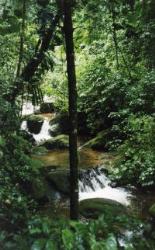use of sulphuric acid
By kishore1987
@kishore1987 (348)
India
October 10, 2006 8:44am CST
hello can any body say that why do we use the compound in lab exp.. for knowing he boiling pont of organic compounds?.....
if any reply plz send to the email id
2 responses
@shalwani (760)
• Pakistan
9 Feb 07
Sulphuric Acid, H2SO4, corrosive, oily, colourless liquid, with a relative density of 1.85. It melts at 10.36° C (50.6° F), boils at 340° C (644° F), and is soluble in all proportions in water. When sulphuric acid is mixed with water, considerable heat is released. Unless the mixture is well stirred, the added water may be heated beyond its boiling point and the sudden formation of steam may blow the acid out of its container (see Acids and Bases). The concentrated acid destroys skin and flesh, and can cause blindness if it gets into the eyes. The best treatment is to flush away the acid with large amounts of water. Despite the dangers created by careless handling, sulphuric acid has been commercially important for many years. The early alchemists prepared it in large quantities by heating naturally occurring sulphates to a high temperature and dissolving in water the sulphur trioxide thus formed. About the 15th century a method was developed for obtaining the acid by distilling hydrated ferrous sulphate, or iron vitriol, with sand. In 1740 the acid was produced successfully on a commercial scale by burning sulphur and potassium nitrate in a ladle suspended in a large glass globe partially filled with water.
The uses of sulphuric acid are so varied that the volume of its production provides an approximate index of general industrial activity. For example, in the early 1970s, annual United States production of sulphuric acid exceeded 29 million tons, a figure corresponding to a daily production of 1/3 kg (3/4 lb) per person throughout the year. The largest single use of sulphuric acid is for making fertilizers, both superphosphate and ammonium sulphate. It is also used in making organic products, refining petroleum, making paints and pigments, processing metals, and making rayon. One of the few consumer products containing sulphuric acid as such is the lead storage battery, found in cars.








